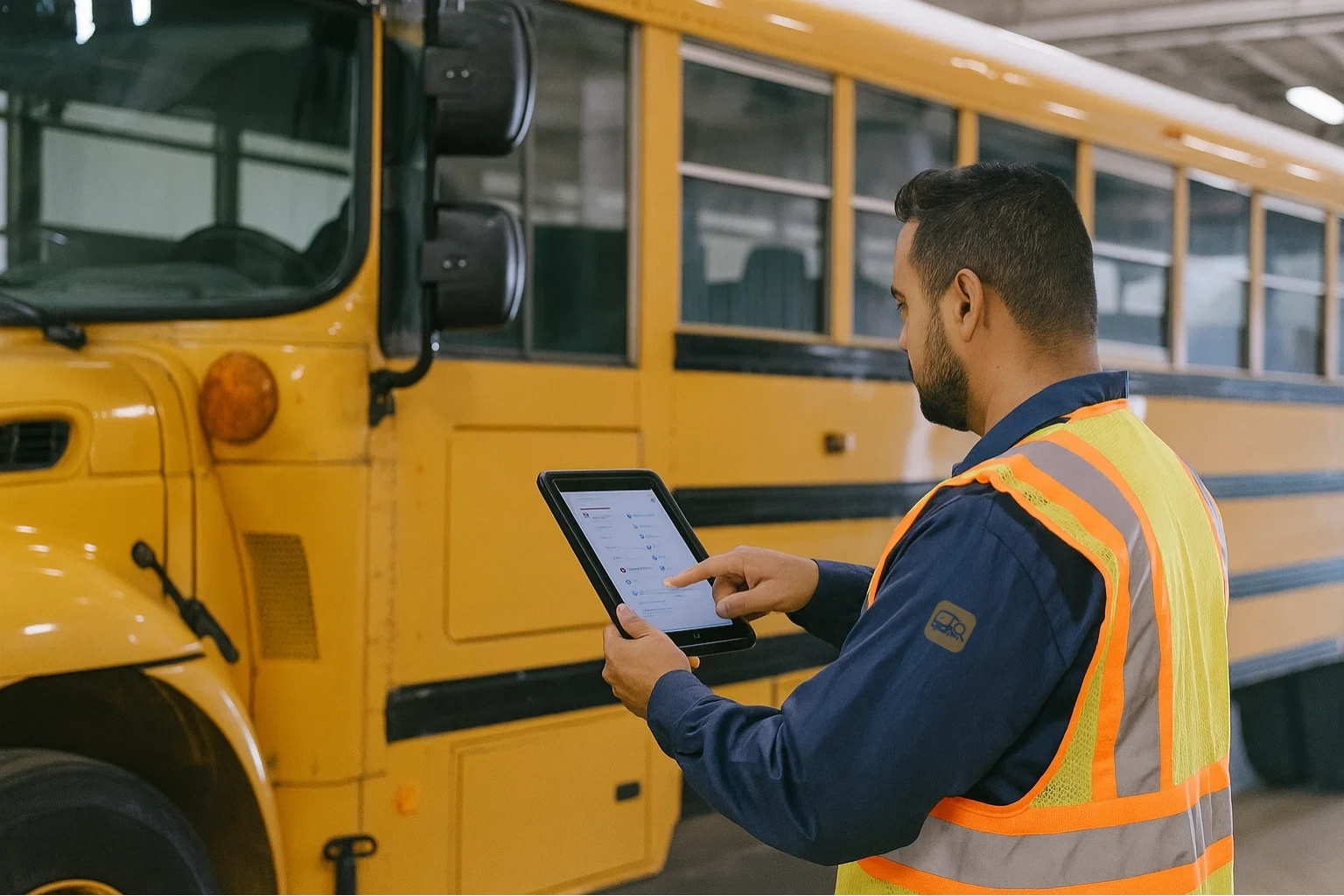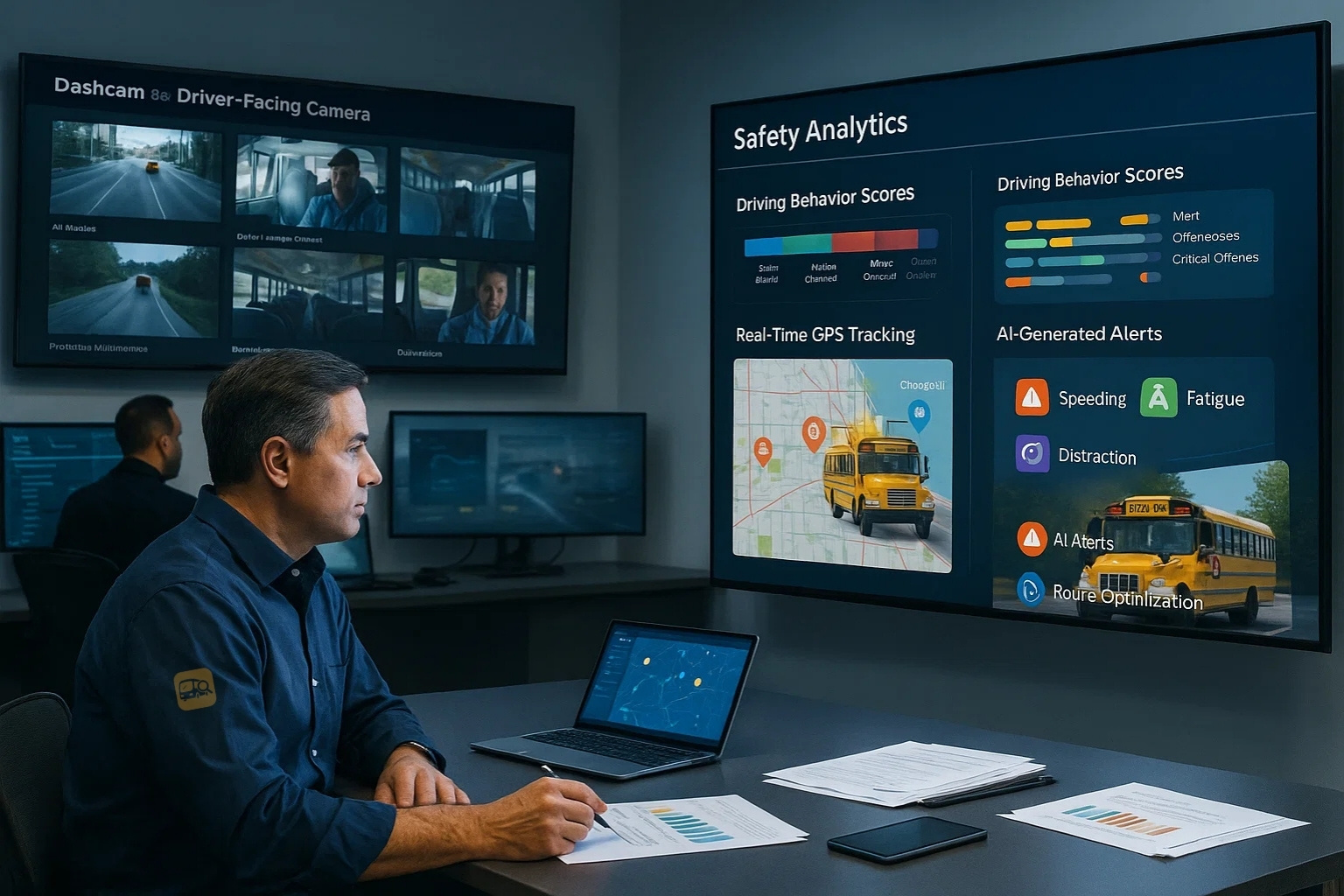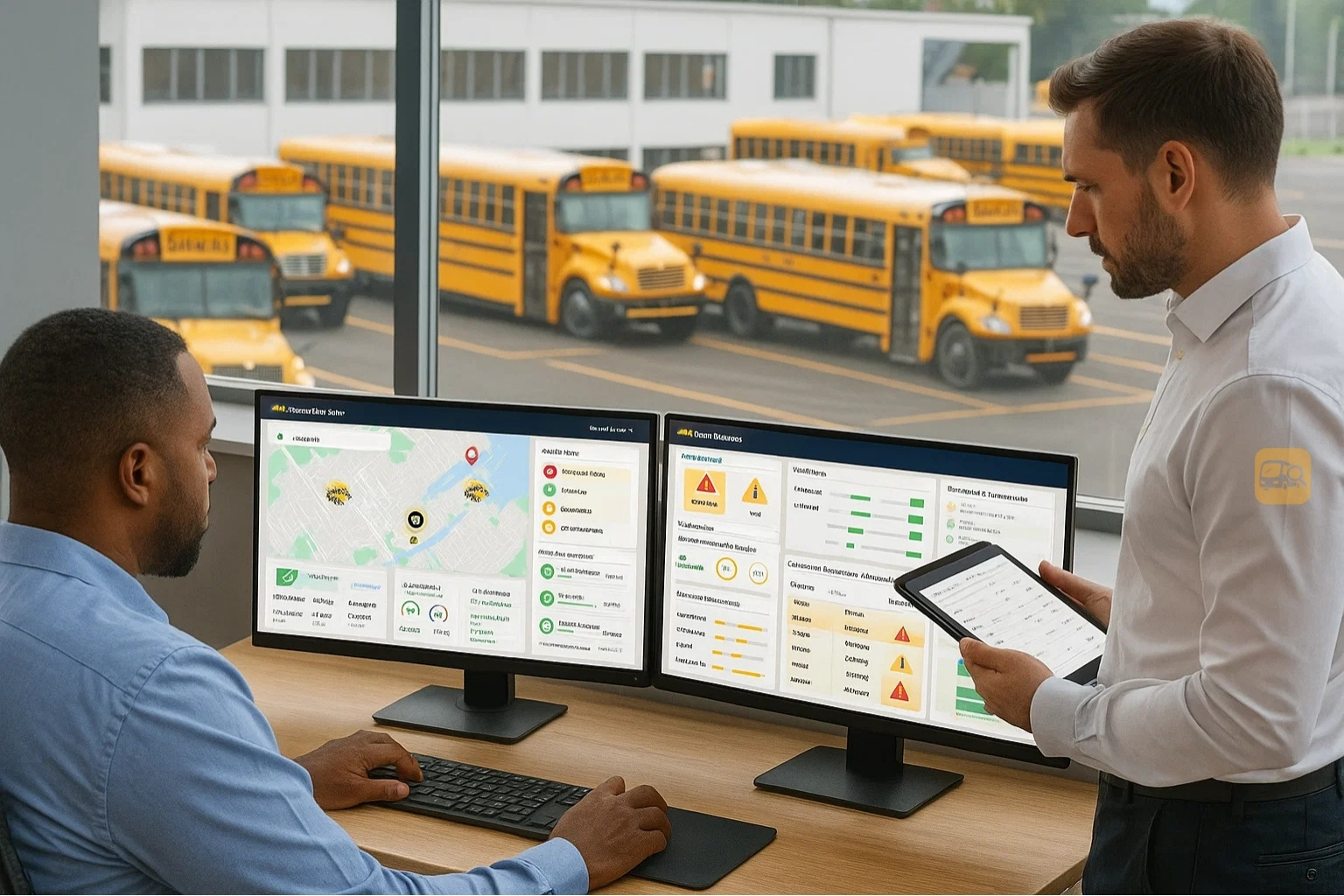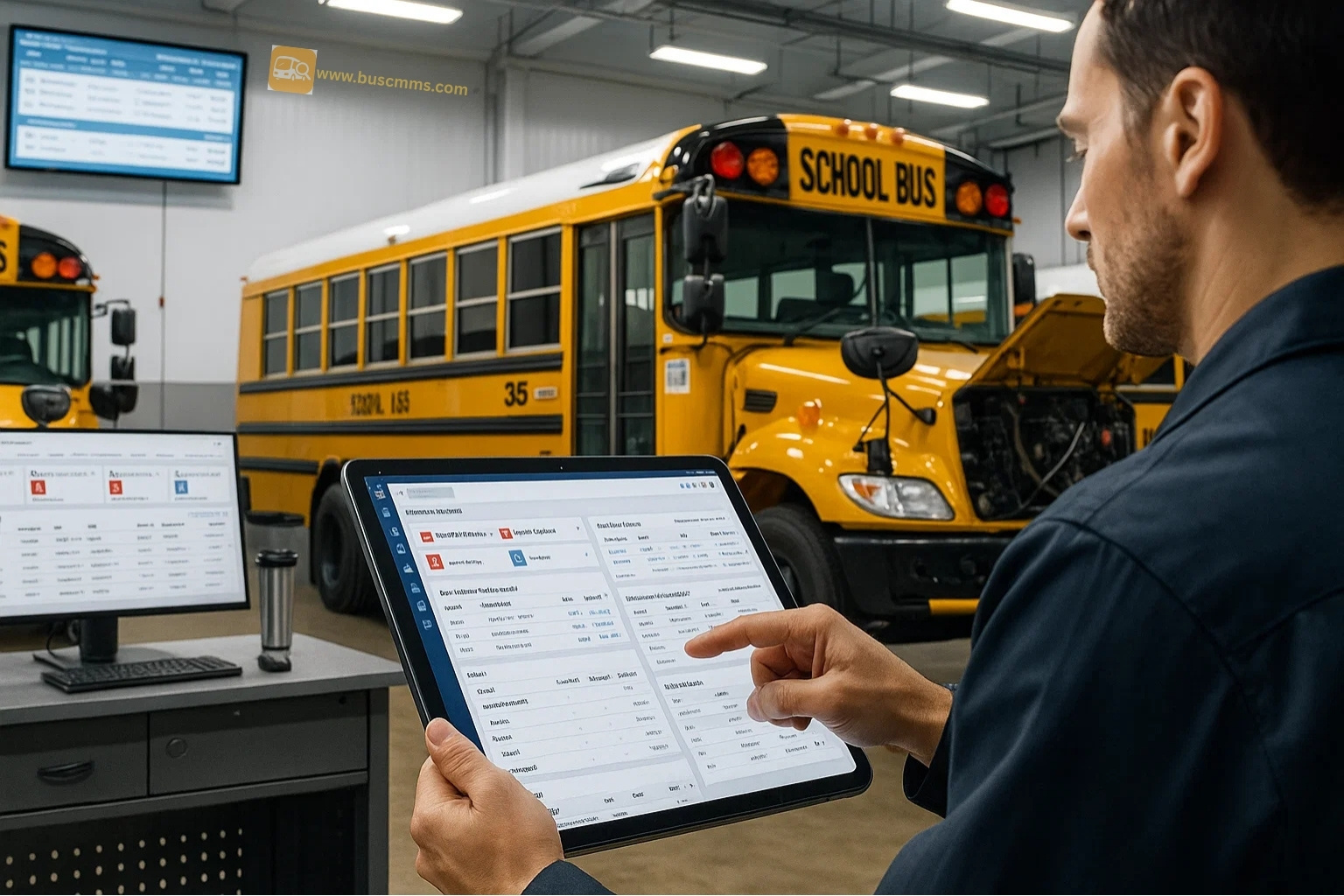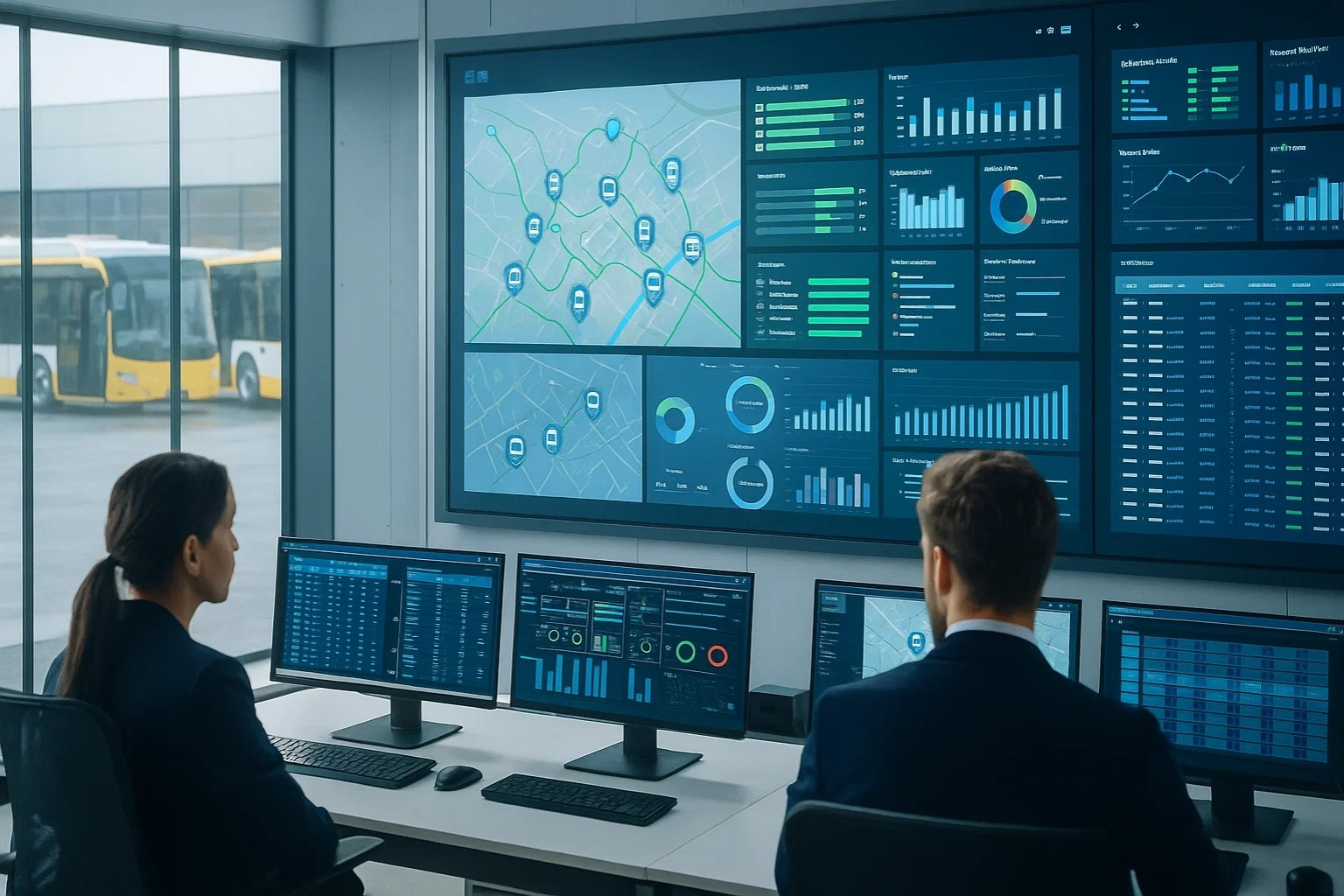In today's competitive manufacturing landscape, transit fleet efficiency directly impacts your bottom line. The integration of GPS tracking systems with Computerized Maintenance Management Systems has emerged as a game-changing strategy for fleet managers looking to maximize vehicle uptime, reduce operational costs, and enhance overall fleet performance.
This comprehensive guide explores nine proven best practices that will help you successfully merge telematics integration with your maintenance software, creating a robust fleet management ecosystem that drives measurable results.
1. Establish Clear Data Integration Protocols
The foundation of successful GPS and CMMS integration lies in establishing robust data integration protocols. Your telematics systems generate massive amounts of real-time data, from vehicle location and speed to engine diagnostics and fuel consumption patterns.
Start by defining which data points are most critical for your maintenance scheduling and fleet insights. Common high-value metrics include:
- Engine hours and mileage for preventive maintenance triggers
- Diagnostic trouble codes for predictive analytics
- Fuel efficiency patterns for performance monitoring
- Idle time and harsh driving events for operator training
Ensure your CMMS tools can seamlessly receive and process this telematics data through APIs or direct database connections, creating a unified view of your fleet's health and performance.
2. Implement Real-Time Diagnostic Monitoring
Modern GPS systems equipped with OBD-II connectivity provide invaluable diagnostic insights that can revolutionize your maintenance approach. By integrating these diagnostic systems with your CMMS, you can shift from reactive to predictive maintenance strategies.
Pro Tip: Set up automated alerts in your maintenance software when diagnostic codes indicate potential issues. This proactive approach can prevent costly breakdowns and extend vehicle uptime significantly.
Configure your system to automatically generate work orders when specific fault codes are detected, ensuring that minor issues are addressed before they escalate into major repairs. This level of fleet automation can reduce emergency repairs by up to 40% while improving overall fleet efficiency.
3. Optimize Maintenance Scheduling Based on Usage Patterns
Traditional time-based maintenance schedules often result in either premature servicing or delayed maintenance. GPS integration allows you to implement usage-based maintenance scheduling that aligns with actual vehicle operation patterns.
Leverage your GPS data to track:
- Actual mileage vs. estimated usage
- Operating conditions (city vs. highway driving)
- Engine load and stress patterns
- Environmental factors affecting wear and tear
This data-driven approach to maintenance scheduling ensures that your bus fleet maintenance occurs at optimal intervals, maximizing component life while maintaining reliability.
4. Enhance Route Optimization and Fuel Management
The synergy between GPS tracking and CMMS extends beyond maintenance into operational efficiency. By analyzing route data alongside maintenance records, you can identify patterns that impact both fuel consumption and vehicle wear.
Use integrated fleet software to correlate route optimization data with maintenance costs. Routes that consistently result in higher maintenance needs or fuel consumption can be redesigned to reduce operational expenses and extend vehicle life.
Implement geofencing capabilities to automatically track when vehicles enter high-stress zones (construction areas, steep grades, heavy traffic) and adjust maintenance intervals accordingly.
5. Streamline Compliance Tracking and Reporting
For manufacturing companies operating transit fleets, compliance tracking is critical for regulatory adherence and risk management. Integrated GPS and CMMS systems excel at automating compliance documentation and reporting processes.
Your integrated system should automatically capture and document:
- DOT inspection schedules and results
- Driver hours of service compliance
- Vehicle emission testing and certifications
- Safety incident tracking and reporting
This automated approach to compliance tracking reduces administrative burden while ensuring that all regulatory requirements are met consistently across your entire fleet.
Want to see these best practices in action?
Schedule Your Demo TodayConclusion: Maximizing ROI Through Strategic Integration
The integration of GPS tracking with CMMS technology represents a significant opportunity for US manufacturing professionals to enhance their transit fleet operations. By implementing these nine best practices, you can achieve substantial improvements in vehicle uptime, operational efficiency, and cost management.
The key to success lies in viewing GPS and CMMS integration not as separate systems, but as components of a comprehensive fleet management strategy. When properly implemented, this integration provides the fleet insights and predictive analytics capabilities necessary to maintain competitive advantage in today's demanding marketplace.
Start with establishing clear data protocols and gradually expand your integration to include real-time diagnostics, usage-based scheduling, and automated compliance tracking. The investment in proper telematics integration will pay dividends through reduced maintenance costs, improved fleet efficiency, and enhanced operational visibility.
Frequently Asked Questions
Q: How long does it typically take to integrate GPS systems with CMMS software?
A: Integration timelines vary depending on system complexity, but most organizations can achieve basic integration within 2-4 weeks. Full optimization with advanced features like predictive analytics may take 2-3 months to implement completely.
Q: What are the typical cost savings from GPS + CMMS integration?
A: Organizations typically see 15-25% reduction in maintenance costs, 20-30% improvement in vehicle uptime, and 10-15% decrease in fuel consumption within the first year of implementation. ROI is usually achieved within 6-12 months.
Q: Can existing GPS and CMMS systems be integrated, or do I need new software?
A: Most modern GPS and CMMS systems offer API connectivity that allows integration without replacing existing software. However, older systems may require upgrades or replacement to achieve full integration benefits.
Q: What training is required for staff to use integrated GPS + CMMS systems effectively?
A: Basic system training typically requires 1-2 days for fleet managers and maintenance staff. Advanced analytics and reporting features may require additional training sessions. Most vendors provide comprehensive training programs and ongoing support.
Q: How does GPS + CMMS integration improve predictive maintenance capabilities?
A: Integration enables real-time monitoring of vehicle diagnostics, usage patterns, and operating conditions. This data feeds predictive algorithms that can forecast maintenance needs 30-90 days in advance, allowing for proactive scheduling and parts procurement.




